HPE Aruba Instant On 1960 24G 2XGT 2SFP+ Switch Internal Hardware Overview
Inside the switch, we see a lot of empty space. There is the switch PCB, a small power supply, and a lot of unused space. These switches also come as PoE versions (JL807A) so having the additional space is likely for the larger power supplies used in PoE switches. It also keeps the size consistent between models.
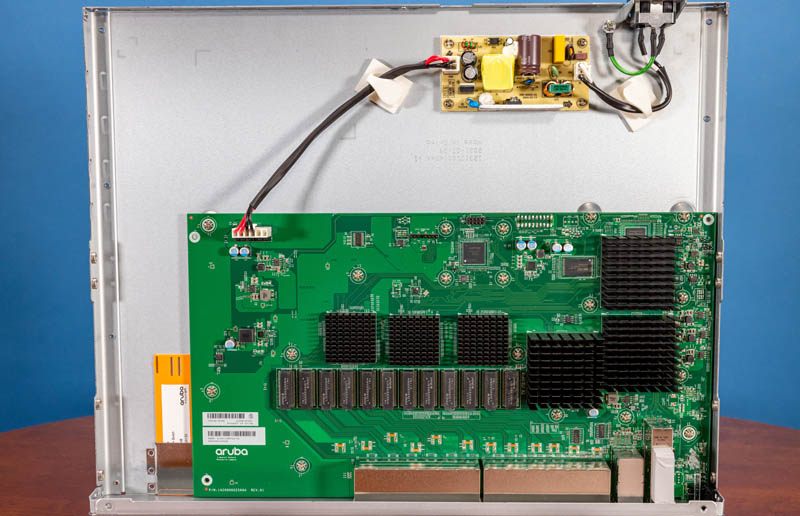
The 24-port version of this switch is fanless, whereas the 48-port version had a fan. The lack of fans means that we do not have the noise. Also, in theory, this means that there are no moving components to fail.
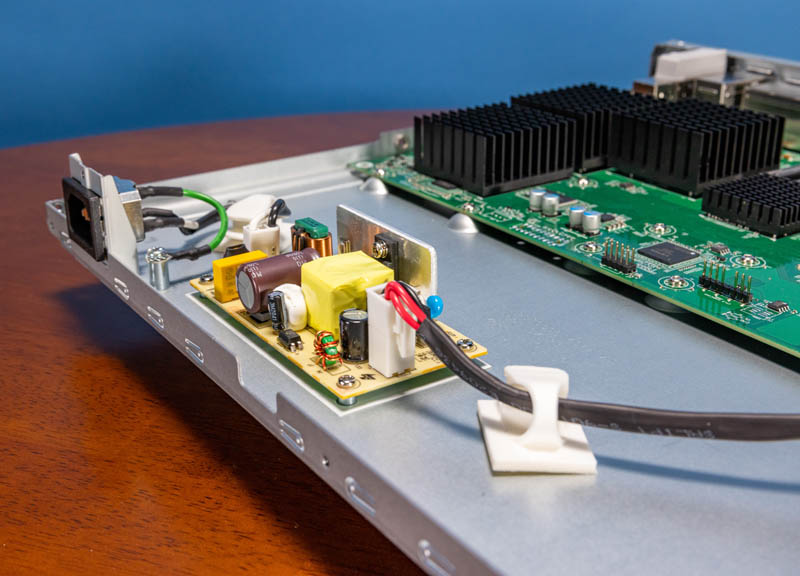
The vent that was on top of the switch is directly over the largest heatsinks inside the chassis.
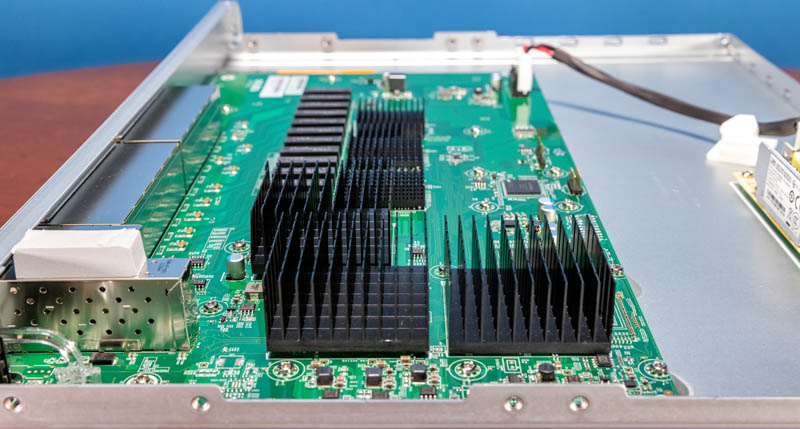
Here is the view from the opposite angle.
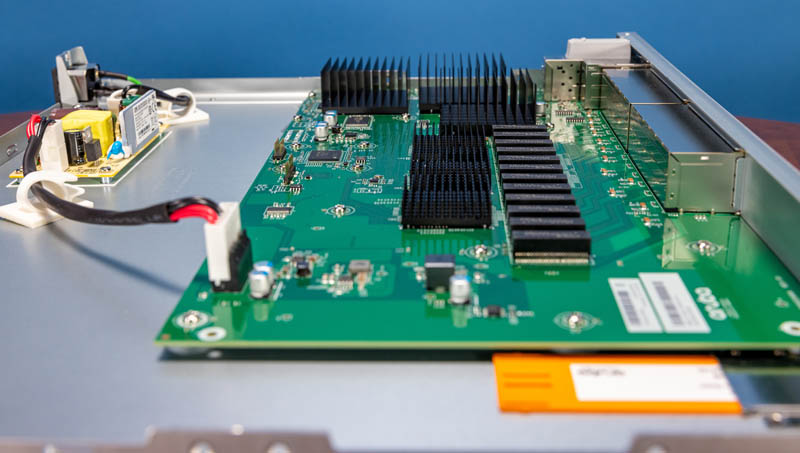
The power supply is a relatively small unit. We will again note it is not hot-swappable nor is it redundant. This is a SMB edge switch so that is common.
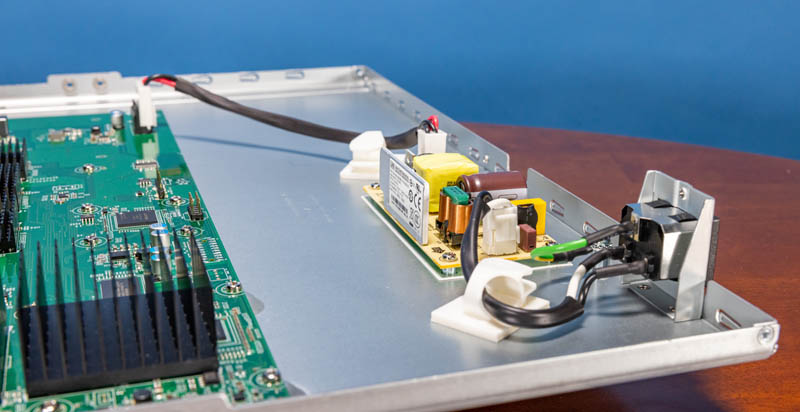
The main PCB has ports, switch chips, and a management processor.
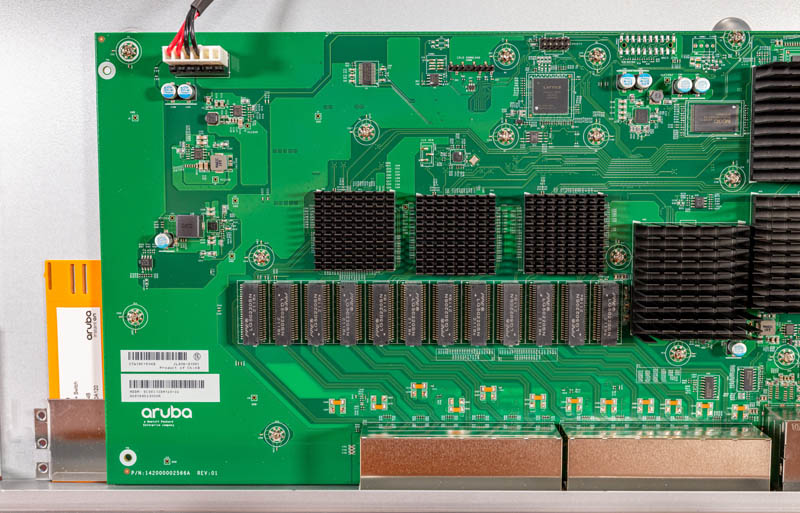
The heatsink closest to the PSU likely has the management processor (an 800MHz single core Arm Cortex-A9) as that has the DRAM package next to it. These heatsinks we did not want to risk removing since this switch has to go back to HPE.
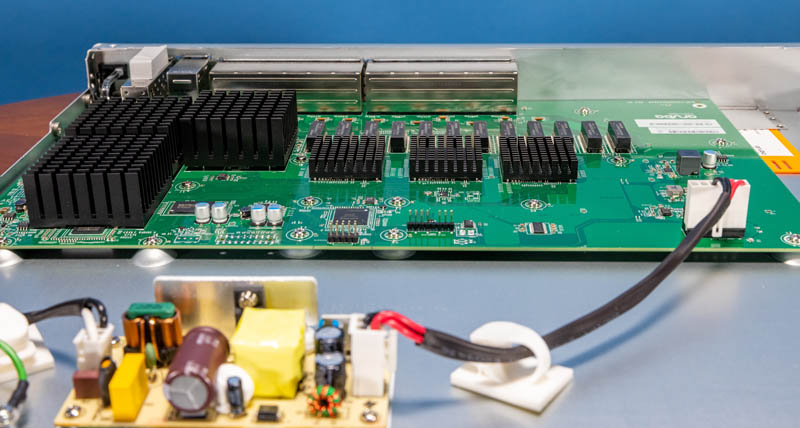
Still, we will give you another view of the heatsink fins inside the switch. We wish we had the PoE version as that would have more going on internally.
Next, let us get to the management aspects of the switch because that is certainly a high point.




Sigh, I was all ready to learn about how fast these would start forwarding packets after a cold power up, but alas their ‘instant on’ is just marketing. Managed switches and routers have always suffered horrible boot times measuring into the minutes realm. We should all be holding these companies feet to the fire to makes their devices boot faster than the servers connected to them.
Don’t switches stay on 99.9% of the time?
Does the use of the vent in the 24-port model mean that it can only be racked at the top of the stack?
Obviously 24-port switches aren’t the first choice in situations where you’ll be cramming them in for port density; but given the tendency of demand for ports to creep up over time and the often-cramped ersatz wiring closets commonly populated by switches deliberately priced lower than the fancy enterprise options having to remember that a specific switch has to either go on top or have 1U or more of blank space included will probably bite a few people if that is in fact required.
Fanless is certainly appreciated for deskside use; but a top vent looks awfully like a violation of the tacit assumption that rackmount gear may make demands in terms of how cold the cold aisle is; and how much unimpeded flow-through they’ll be allowed; but aren’t really supposed to have binding opinions about what is above or below them. It’s a pity that they couldn’t have made it work with some combination of front, rear, and side vents.
@eug – In theory, yes they stay on all the time; that’s been my experience until they break. In practice there should be scheduled downtime (and we all do that, right?) to perform code upgrades that avoids or minimizes impact to users.
I am starting to question the rationality of Rohit’s reviews… or the quality of editorial and grammatical review at STH.
Saying the switch has an IP address and it uses DHCP in the same sentence shows a lack of understanding in those technologies, or a rush to get a review out the door. And I doubt that anyone installing this switch, after dropping a few C-notes for it, is a complete n00b that would nuke their own network; the threat implied by using an IP address that duplicates many SMB routers.
I suspect this switch actually attempts to use DHCP first. If DHCP fails to obtain a lease, then it defaults to it’s assigned IP address rather than resorting to APIPA addressing. And that assigned IP address of 192.168.1.1 IS a POOR CHOICE. Patrick, I’ll take a few $$ to rewrite a properly worded review for this product, thank you.
This review makes me wonder if Rohit ever found the loose screw between the keyboard and his chair. /facepalm/